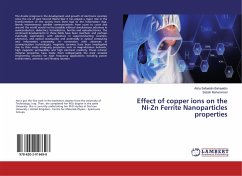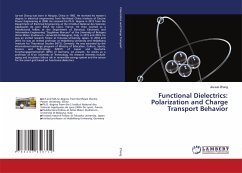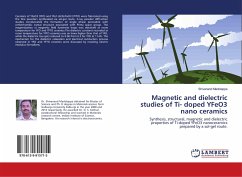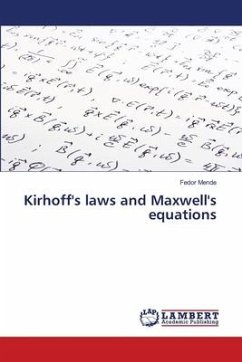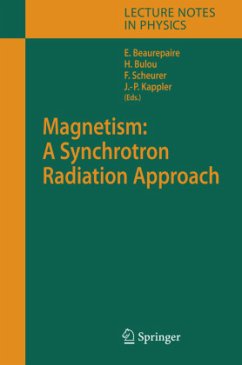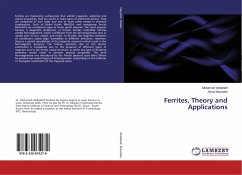
Ferrites, Theory and Applications
Versandkostenfrei!
Versandfertig in 6-10 Tagen
29,99 €
inkl. MwSt.

PAYBACK Punkte
15 °P sammeln!
Ferrites are fascinating compounds that exhibit magnetic, electrical and optical properties, that are useful in many types of electronic devices. They are composed of iron oxide and one or more other metals in chemical combination. Such as Nickel ferrite NiFe2O4, and manganese ferrite MnFe2O4 are considered types of these spinel minerals. The most popular ferrites, is magnetite (lodestone, or ferrous ferrite), Fe(Fe2O4). Ferrites exhibit ferrimagnetism, which is different from the ferromagnetism seen in metals such as iron, cobalt, and nickel. In ferrites, the magnetic moments of constituent a...
Ferrites are fascinating compounds that exhibit magnetic, electrical and optical properties, that are useful in many types of electronic devices. They are composed of iron oxide and one or more other metals in chemical combination. Such as Nickel ferrite NiFe2O4, and manganese ferrite MnFe2O4 are considered types of these spinel minerals. The most popular ferrites, is magnetite (lodestone, or ferrous ferrite), Fe(Fe2O4). Ferrites exhibit ferrimagnetism, which is different from the ferromagnetism seen in metals such as iron, cobalt, and nickel. In ferrites, the magnetic moments of constituent atoms align themselves in different directions. However, there is a partial cancellation of the magnetic moments which result in the ferrimagnetic property. The broken symmetry due to the atomic orientation is considered due to the presence of different types of magnetic ions in the ferrite crystal structure. In which any type of breaking symmetry would result in peculiar physical properties.The term ferrimagnetism was introduced by the French physicist Louis Néel. Where he pointed out several types of ferrimagnetism, depending on the collinear or triangular orientation of the magnetic spins.



